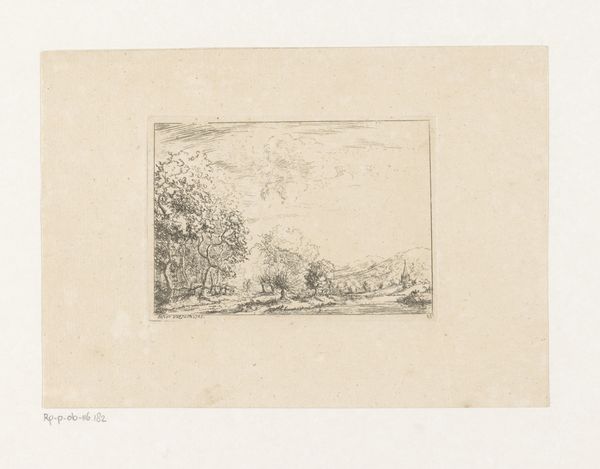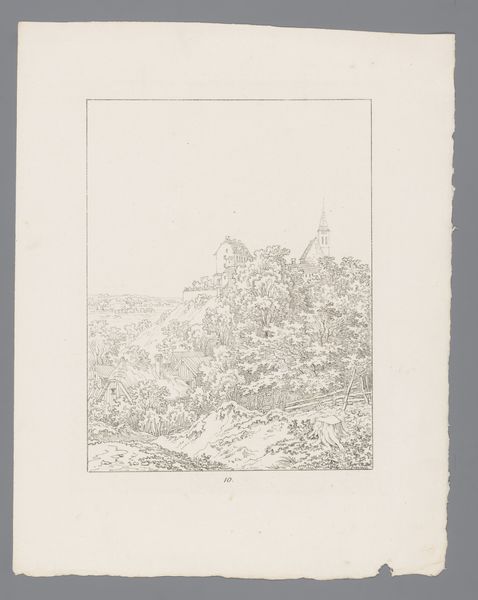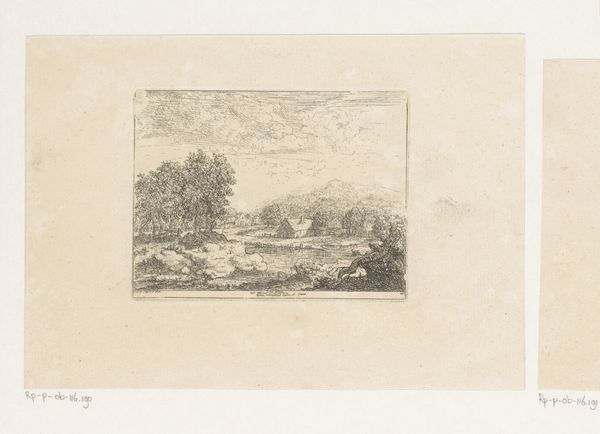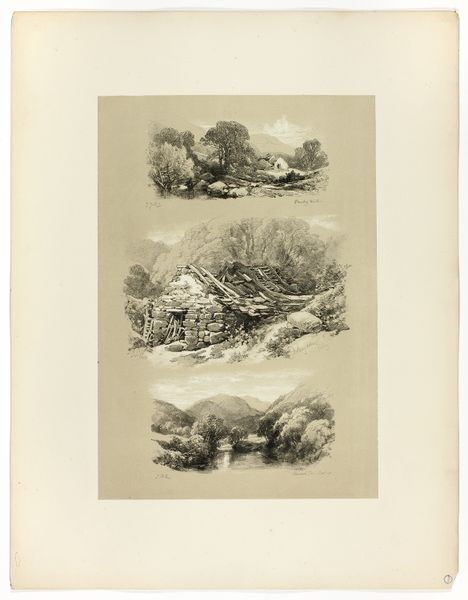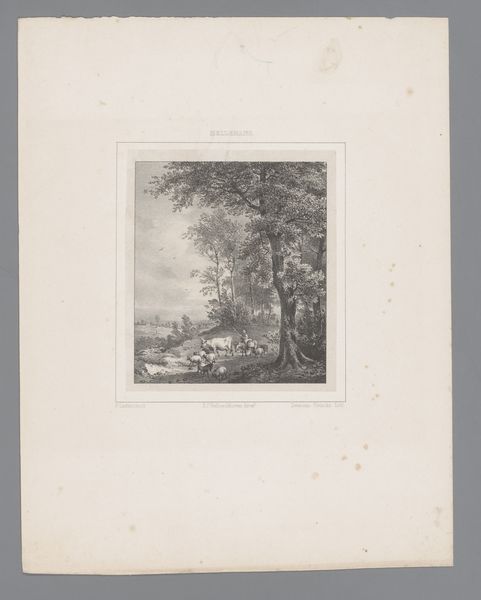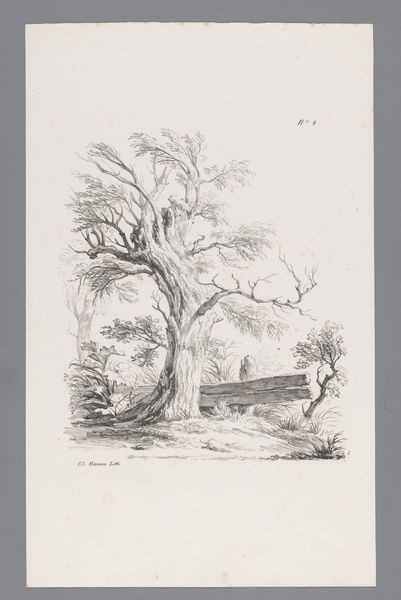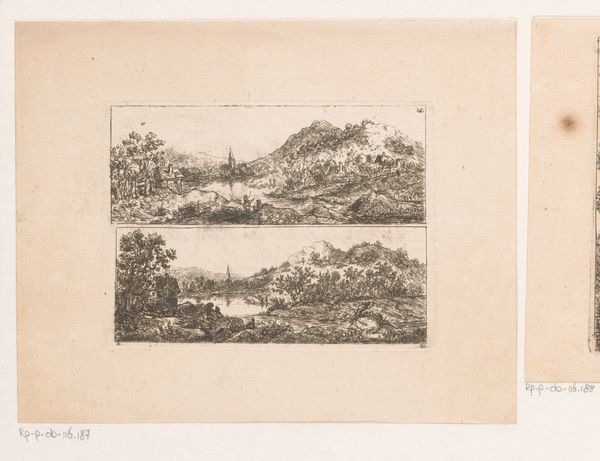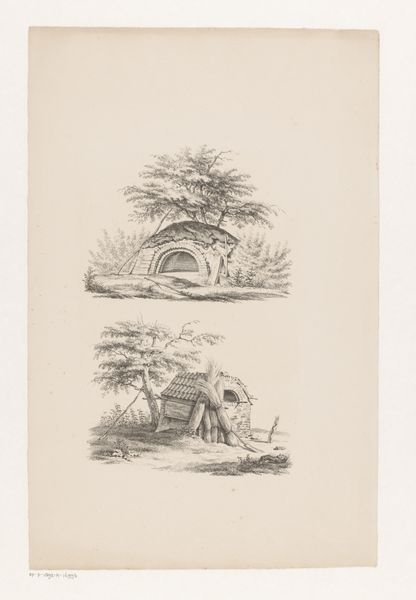
drawing, pencil
#
drawing
#
asian-art
#
landscape
#
river
#
pencil
#
watercolor
#
realism
Dimensions: height 390 mm, width 305 mm
Copyright: Rijks Museum: Open Domain
Editor: Here we have Willem Mathol de Jong’s “Vestingwerk en woning van een commandant op Borneo,” dating from around 1838 to 1886. It’s a pencil and watercolor drawing depicting two scenes of dwellings along a riverbank. It feels very documentary in style, but also quite romantic in its depiction of the landscape. What strikes you about this work? Curator: It’s easy to see it as a purely documentary landscape, but I think we need to push against that initial reading. Consider the historical context. This was created during a period of intense Dutch colonial activity in Borneo. How might these seemingly benign depictions of dwellings actually function as tools of empire? Editor: That’s interesting; I hadn't considered that. You mean how it might legitimize the colonial presence? Curator: Precisely. These drawings present a specific vision of the colonized land, perhaps downplaying certain aspects of indigenous life while emphasizing the order imposed by the "commandant's" presence. Think about whose gaze is prioritized here. Editor: So, the artist might be subtly reinforcing a power dynamic. But isn't it possible they were simply recording what they saw? Curator: Perhaps. But can we ever truly divorce ourselves from our social and political contexts? Even the act of choosing what to depict, what to leave out, is inherently political. I wonder, what impact do you think these images had on the folks viewing them back in Europe? Editor: I see your point. It probably reinforced existing ideas of exoticism, power, and maybe even justification for colonization. Thanks for that insight; I would’ve just passed this off as an interesting landscape! Curator: It is that too! But by considering the power dynamics at play, we can enrich our understanding and make the art relevant to today's conversations about colonialism, identity, and representation.
Comments
No comments
Be the first to comment and join the conversation on the ultimate creative platform.

